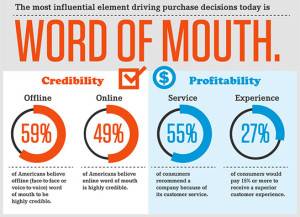“Friendship is the hardest thing in the world to explain. It’s not something you learn in school. But if you haven’t learned the meaning of friendship, you really haven’t learned anything.”
― Muhammad Ali
As human beings, our only real method of connection is through authentic communication. Studies show that only 7% of communication is based on the written or verbal word. A whopping 93% is based on nonverbal body language. (Forbes)
This presents an unprecedented paradox. With all the powerful social technologies at our fingertips, we are more connected – and potentially more disconnected – than ever before.(Forbes)
WHAT DOES THIS ALL MEAN?
Will the advancement of social media lead to the demise of Word of Mouth?
How you say, well let me explain. With people forging friendships over the internet the term of friend becomes more and more less credible. Not because it’s not possible, but it increases the probability of dealing with individuals who are not of upstanding character. As emphasized in the quote from Forbes above 93% of communication is based on nonverbal body language this makes the quality of friendships drop to staggering lows. This would make it harder to take people’s “word” for it which is the backbone of Word of Mouth.
With 93% of our communication context stripped away, we are now attempting to forge relationships and make decisions based on phrases, abbreviations, snippets, and emoticons. Which may or may not be accurate representations of the truth. (Forbes)
What becomes of a people who no longer trust each other when you have depreciation in the value of another persons opinion. If you don’t value their opinion, does this affect their buying experience or brand preference? I’m not going to put the cart before the horse but it could be a snippet of what’s to come.
In the workplace, the use of electronic communication has overtaken face-to-face and voice-to-voice communication by a wide margin (Forbes)
It’s becoming harder for the youth of the day to communicate their ideas and comprehend the ideals of others. Seeing the increase of social media interaction has given us a grim understanding that people would rather talk to a screen than a person.
This major shift has been driven by two major forces: the speed/geographic dispersion of business, and the lack of comfort with traditional interpersonal communication among a growing segment of our employee population (Forbes)
Studies show that these Generation X,Y and Millennials – which will comprise of more than 50% of the workforce by 2020 – would prefer to use instant messaging or other social media than stop by an office and talk with someone. This new communication preference is one of the “generational gaps” plaguing organizations as Boomers try to manage to a new set of expectations and norms in their younger employees, and vice versa. (Forbes)
If the workforce is beginning to experience the breakdown of one on one interaction, this means the workforce is a mirror of society norms and practices. You can only imagine what may happen once its start to rot away at the longest and most productive form of marketing.







